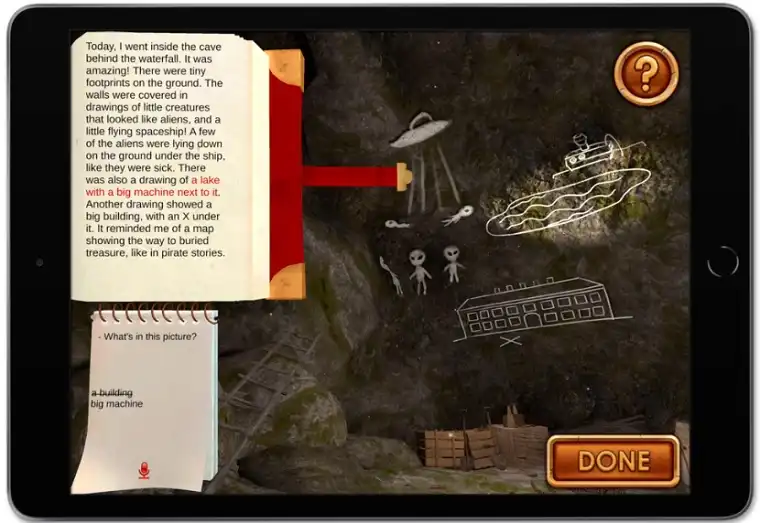The groundwork for setting up a reading routine begins early in a child’s life, when caregivers read to them throughout the day.
Reading is an important skill that teaches children how to focus, comprehend, and communicate. Improving literacy sets the baseline for learning as children advance through elementary and middle school.
It’s normally recommended that children read for about 20 minutes every day. This can be a daunting task when daily schedules are filled with school, extracurriculars, meals, and family time.
Need some tips for getting your child into a reading routine?
Check out our list below to help make reading habits become a normal part of your child’s daily routine.
1. Create a Reading Nook
The first step to create a reading routine is to decide a fun space for the reading to occur.
Of course, reading can happen anywhere at home, but having a specific place for your child to go and read will help make reading a daily occurrence. Children will be more likely to continue with the routine if there is a specific location for it.
You can set up a reading nook in your child’s room or in any cozy area of the house.
Make the reading nook fun with a comfortable place to sit. You can use a beanbag chair or floor pillows for added fun. There are also great play couches that can be transformed into different reading loungers.
Add some sparkle! Having a good reading light is important, but you can also add some sparkle to the nook with different types of string lights. A reading space next to a window also provides great natural light.
Lastly, be sure the variety of reading materials are easily accessible in this reading space. It’s important to have the books at arm’s reach. If the books are in another room, it can be distracting for a child to have to walk to another area during the time that is specified for reading.
2. Make Reading a Joint Effort
Reading can be a wonderful opportunity to spend quality time with your child.
Part of the reading routine can include deciding who is going to be doing the reading. If your child is young, and still learning how to read, the reading routine can include you doing most of the reading to them.
As children improve their reading skills, have them practice reading aloud with you. Reading aloud helps children practice active listening. They also learn to express the emotion of the characters in the book.
Have an excellent reader? This reading routine can include independent reading. You can also include some more challenging books to read together on certain days. This will help ensure that your child’s reading skills are being further developed.
The entire reading routine does not have to be a quiet activity. Discuss the books with your children after reading. Talk about the characters and the storyline. Ask questions about what happened during the story.
You can also ask them about their opinion of the story and if they would like to read the story again.
This dialogue helps improve reading comprehension. It also builds a relationship with the reading routine so that children do not view it as another part of homework.
3. Have Plenty to Read at Home
Now that you have the cozy area to read, and you know who will be reading in this nook, what will your child read? Choose a bookshelf that can display many different reading materials. These materials can include your own books, library books, and a computer or tablet.
It’s important to include a variety of genres in the bookshelf. The variety will ensure that your child has choices when picking out what they want to read each day. Include both fiction and non-fiction stories.
Fictional stories lead the way for great conversation about the experiences of the characters within the book.
Non-fictional stories allow for additional learning content to make its way into your reading routine. If you have a budding scientist, include some books about volcanoes or fossils. These non-fictional stories can still be age-appropriate, while allowing for a more specific learning discussion after.
For early readers, it is good practice to read the same book for a few days in a row. This will help children practice recognizing sight words within the text. Be sure to point out specific sight words as you read.
If it is your own book (not the library’s) you can underline the sight words that you will be practicing that week. This will help draw attention to these specific words during your child’s reading time. Children should repeat the sight words out loud while they are engaging in the story. You can even practice spelling them too!
Want to switch up the reading activity? Check out some reading apps that help engage children while also teaching them to read. Lou Adventures is an interactive reading comprehension story app.
 Lou Adventures: An Interactive Learning Story for Kids
Lou Adventures: An Interactive Learning Story for Kids
Lou Adventures is an interactive learning story for kids that helps them improve their reading skills through a fun, adventurous game.
Lou Adventures is a free and fun way to spice up the reading routine. Lou Adventures includes a furry friend, Lou, that invites your child to read through exiting stories. After each section, the app asks them reading comprehension questions. After their reading time is complete, you can check their progress on the dashboard.
You can check out our Lou Adventures review for a full look at the app.
Click here to try Lou Adventures for free!
4. Find the Right Reading Schedule
It’s important for children to be excited about the reading routine.
If you do not currently practice reading daily, you can ease into the routine. Jumping right into a daily reading schedule might be overwhelming for some children.
If you already read daily, then implementing a stricter routine won’t be an issue.
If not, you can start slowly by reading together a few times a week. Decrease the frequency between reading days until you comfortably reach the daily activity.
It is suggested that children read for at least 20 minutes each day. If this seems like a long time for a new reader, you can divide up the time spent reading. You can also have children read or explore books for 10 minutes independently, and then join them for the last 10 minutes of their reading time.
Include a quiet timer, such as an hourglass sand clock, to have a visual representation of the reading time.
5. Use a Reading Log
Having a reading checklist or reading log that helps track your child’s reading routine gives them incentive to read.
There are a variety of free printable worksheets online that allow you to choose different formats for your checklist. Some worksheets have a table that includes listing the book and recording a reaction to the story. Others require simply coloring a block for every 5,10, or 20 minutes of reading time.
Search for a reading log together with your child. They will pick out the one that seems most exciting to them. If they choose it, they are more likely to want to follow the routine.
Some reading logs have a reward system included within the worksheet. For example, after 10 days of reading a reward is given. This can be any type of reward you feel is best suited for your child.
You can also put an analog clock in the reading nook. You can use a marker to color 20 minutes of the clock, usually before bedtime routine, to show your child how much time they will be reading for.
6. Find Ways to Include Reading in Your Daily Routine
It is important to incorporate the reading routine into your daily routine.
For some families, it’s easiest to pair the reading routine with the bedtime routine. No matter when you decided to implement the routine in your child’s day, be sure to create a physical chart or diagram to show where the reading routine occurs.
For example, maybe after dinner, the child has free play time followed by a reading routine.
Show the progression of dinner, free play, reading routine, and bedtime routine in a physical chart for your child.
As with any routine, consistency is key. Finding the right time is an important part of building this consistency for your child.
Have any tips that have worked for you in creating a reading routine for your child? Share your thoughts by commenting below.


